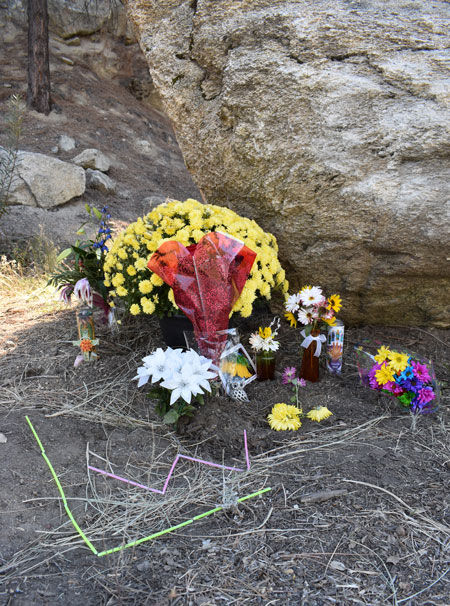By Arthur Connor
Music Reviewer
Music Faculty Recital, Idyllwild Arts, Stephens Recital Hall, 8 p.m. Friday, July 22
Symphony Orchestra Concert, Idyllwild Arts, Lowman Concert Hall, 3:30 p.m. Saturday, July 23
With the arrival of the summer season at Idyllwild Arts, all the new students, as well as new faculty members, had their well-deserved opportunities to put their talents on display at various campus locations this past weekend; none more deserving than that of the brand-new (and newly restructured) Lowman Concert Hall facility (but more on that later).
The first advantageous opportunity occured this past Friday evening, when the majority of IA music’s faculty and student mentors gave a more than adequate demonstration of individual talent and ensemble-playing proficiency. As varied as the printed program was, ranging from Argentinian tango, Brazilian quasi-samba and genuine Romanian hora, to say nothing of the jazz- and popular-inspired pieces among the classical tidbits, each presenter did his or her part to form the unified presentation of the school’s overall talent perspective.
Among the more noteworthy performances included the clarinet quartet’s interpretation of the opening movement of Alfred Uhl’s “Divertimento” and the saxophone quartet’s playing of David Maslanka’s “Overture to Mountain Roads,” both demonstrating a synchronous sounding of true wind intonation.
The individual, noteworthy performers included an especially notable rendition of the first movement of Brahms’ “First Cello Sonata” on the double bass by Noah Reitman; James Hodges’ playing of Lutoslawski’s “Dance Preludes” for clarinet; and particularly Scott Sutherland’s ambidextrous version of George Gershwin’s “Prelude #2,” with his left hand on piano and his right on the tuba.
The ensemble portion of the program was definitely concluded with combo renderings of compositions by Henry Mancini (“The Days of Wine and Roses”) and the Masuda/Siegler/Loeffler “Introduction, March and Chant,” both evincing jazz and pop performance standards rarely encountered in today’s musical environs, even in live settings.
As impressive as the presentation was then, Saturday afternoon’s symphony concert proved even more so; the 100-plus players filled Lowman’s stage to capacity (only to be outdone by a nearly full concert hall), and such increase of orchestral forces only was an enhancement to the work already performed on the hall’s sonorous capabilities (this reviewer having noted some changes in the overhead beam structure, which also proved a change for the better as to sound quality).
And with the opening work on the program — Leonard Bernstein’s “Candide Overture” — conductor Larry Livingston’s forces held an immediate sway on the assembly, with the evident contrasting string and brass sections putting forth their respective wealth of sound, and with soft and loud sections in equal measure in exact sound propulsion.
Similarly, Livingston’s assistant conductor, Joshua Roach, in his essaying of Dvorak’s “Slavonic Dance, Opus 46 #4,” put forth the composer’s wishes in admirable fashion, giving equal balance in both the slow introduction and the faster conclusion to individual touches in the winds, as well as maintaining admirable string tone.
But it was in the selected movements of Maurice Ravel’s orchestral reworking of Modest Mussorgsky’s “Pictures at an Exhibition” that both Livingston’s conductorial prowess and the players’ capabilities came to the fore, as well as the both of them had to in such an orchestral tour de force. Ravel’s interpretation of the solo piano pieces remain a true test for any such instrumental gathering, and the individual parts (in particular the brasses and the percussion battery) only emphasize what is of utmost import in overall orchestral control.
Livingston’s mastery of that element was evident from the opening “Promenade” statement, and throughout the selected pieces (particularly in the latter “Hut of Baba Yaga” and “The Great Gate of Kiev” conclusion) such integral playing was achieved with the minimum of gesture and maximum of concentration that has characterized his previous performances, and a wildly enthusiastic appreciation from the large audience was effected at the proceedings’ end.
Mention also should be made here of the efforts of IA’s summer coordinator, Mark Davis, to bring both players, coaches and teaching assistants together in both those cases, and one can look forward to next Saturday’s symphonic concert (with another Dvorak “Slavonic Dance” as well as more of the “Pictures”) with more than passing interest.






